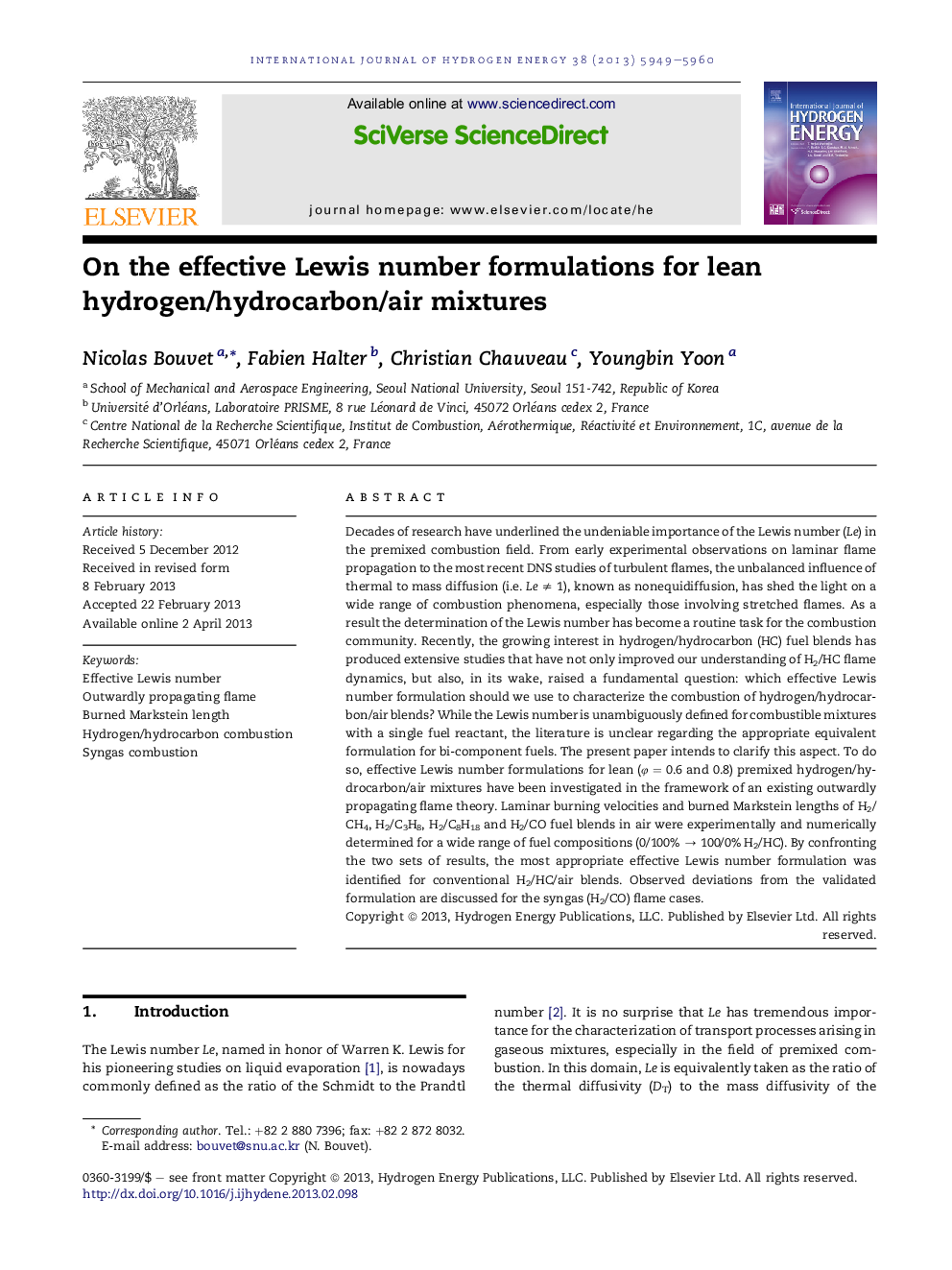| کد مقاله | کد نشریه | سال انتشار | مقاله انگلیسی | نسخه تمام متن |
|---|---|---|---|---|
| 1281705 | 1497531 | 2013 | 12 صفحه PDF | دانلود رایگان |

Decades of research have underlined the undeniable importance of the Lewis number (Le) in the premixed combustion field. From early experimental observations on laminar flame propagation to the most recent DNS studies of turbulent flames, the unbalanced influence of thermal to mass diffusion (i.e. Le ≠ 1), known as nonequidiffusion, has shed the light on a wide range of combustion phenomena, especially those involving stretched flames. As a result the determination of the Lewis number has become a routine task for the combustion community. Recently, the growing interest in hydrogen/hydrocarbon (HC) fuel blends has produced extensive studies that have not only improved our understanding of H2/HC flame dynamics, but also, in its wake, raised a fundamental question: which effective Lewis number formulation should we use to characterize the combustion of hydrogen/hydrocarbon/air blends? While the Lewis number is unambiguously defined for combustible mixtures with a single fuel reactant, the literature is unclear regarding the appropriate equivalent formulation for bi-component fuels. The present paper intends to clarify this aspect. To do so, effective Lewis number formulations for lean (φ = 0.6 and 0.8) premixed hydrogen/hydrocarbon/air mixtures have been investigated in the framework of an existing outwardly propagating flame theory. Laminar burning velocities and burned Markstein lengths of H2/CH4, H2/C3H8, H2/C8H18 and H2/CO fuel blends in air were experimentally and numerically determined for a wide range of fuel compositions (0/100% → 100/0% H2/HC). By confronting the two sets of results, the most appropriate effective Lewis number formulation was identified for conventional H2/HC/air blends. Observed deviations from the validated formulation are discussed for the syngas (H2/CO) flame cases.
► Effective Lewis number formulations for bi-component fuels are investigated.
► Lean premixed hydrogen/hydrocarbon/air flames are considered.
► Corresponding Su's and Lb's are experimentally and numerically determined.
► The volumetric weighted approach is the most consistent one for the alkanes.
► The relevance of the volumetric formulation is not confirmed for syngas mixtures.
Journal: International Journal of Hydrogen Energy - Volume 38, Issue 14, 10 May 2013, Pages 5949–5960